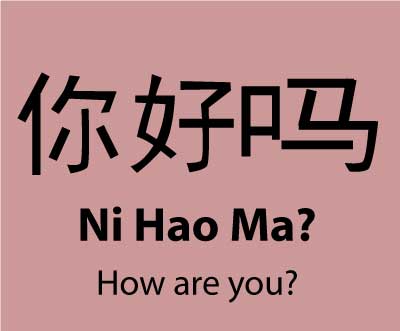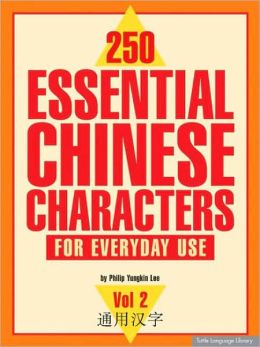Learning to read and write Chinese can be much more difficult than many languages due to the unique character structure. Many new students quickly realize the need to learn each individual character to increase word recognition and the only way to do this is through constant practice. If you are studying Chinese, then you might want to consider using the book, 250 Essential Chinese Characters for Everyday Use to help you learn to read and write.
This book presents each character and then breaks it down to explain why it was written as such. For example, when the book presents the word “ming” which means “name”, it explains that the character is a combination of the characters for mouth and evening. The book explains that in a previous time, people in China would identify themselves in the night by calling out their names.

After the character explanation, the book provides some other compound words. In the case of “name”, the book explains that the word “business card” is a “mingpian”, the word for “a famous scenic spot” is “mingsheng”, and “brand name” is “mingpai”. Suddenly, this book of 250 words has just become so much more!
Next, is the stroke breakdown. Since it is important to write each stroke of a Chinese character in the proper order, the book presents the word order. In the case of “ming”, there are seven strokes. The book then provides a grid of boxes for the student to practice. The student can choose to practice each stroke combination in the boxes or use the boxes to write the entire character.
"Learning to read and write Chinese can be much more difficult than many languages due to the unique character structure. Many new students quickly realize the need to learn each individual character to increase word recognition and the only way to do this is through constant practice."
This book is really good for students studying Chinese independently. If you are teaching Chinese, you may want to recommend this book to your students for their own personal use. If you would like to incorporate the book into your class, the best way to do so is to review the instructional portion during class and have your student draw the character with you once or twice. Then, the rest can be homework. As a teacher, you can probably think of other compounds or sentence examples to give your students. This book is a great supplementary material for your class, but it’s not ideal to make your whole lesson around it considering it’s quite easy for the student to use independently.
Overall, this is a good book to learn how to read and write Chinese. Once a student learns these 250 words along with the compounds, he/she will have a good written vocabulary to start working with. If you are a student in China, it will help to look for these characters outside of the classroom as well; many of them can be spotted on signboards or magazines. Good luck!




